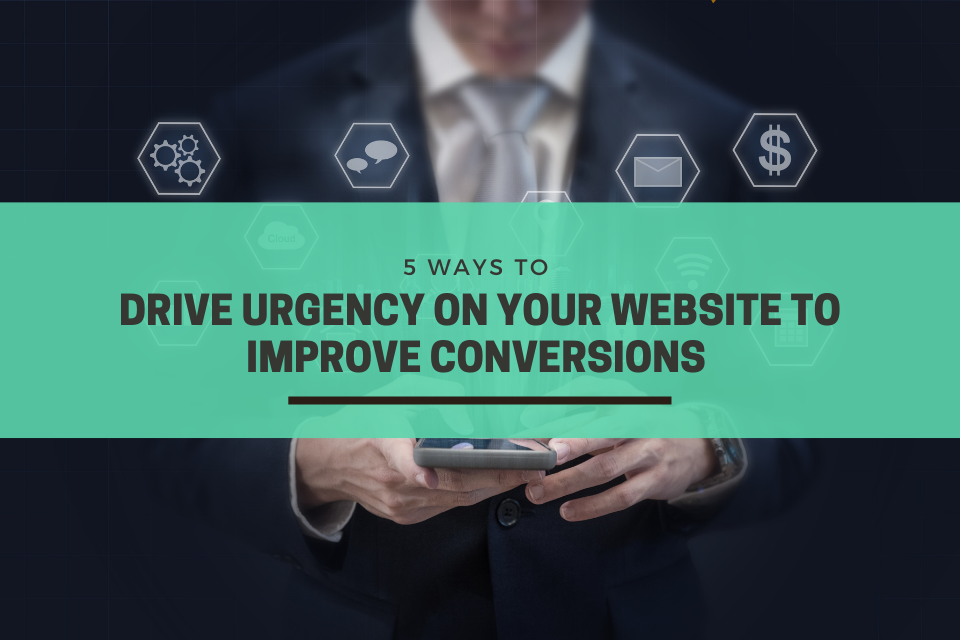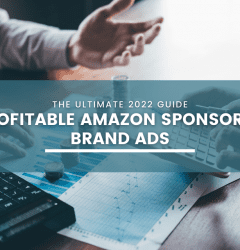This website uses cookies so that we can provide you with the best user experience possible. Cookie information is stored in your browser and performs functions such as recognising you when you return to our website and helping our team to understand which sections of the website you find most interesting and useful.
- Email: growth@growisto.com
- Phone: +1 628-280-9076
07 Sep

5 Ways to Drive Urgency On Your Website to Improve Conversions
In the field of eCommerce, customer hesitation is a major deterrent to high conversions. Today, with the convenience of shopping from home and the availability of multiple sites, customers can afford to take more time before making a decision. They might research and deliberate purchases over several days before converting.
As a result, that one item might just be ‘sitting in the cart’ for days, or your customers might be ‘still thinking about it’!
Most brands rarely try to eliminate this hesitancy. So what is it that high converting brands do differently? They employ ‘urgency tactics’ on their website, by understanding their customer’s psychology.
Creating a sense of urgency helps to fasten up the purchasing process and increase chances of impulse buys. It also motivates those already contemplating, to buy before they miss out. When employed effectively, urgency tactics can substantially create demand from thin air.
In this edition of the blog, we discuss key ways to drive urgency on your website for better conversions.
- Time-limit: Informing the audience about a certain time period to avail an offer/deal/discount is the most simple yet effective way of creating a sense of urgency.
- Potential price increase: Consumers are more likely to purchase today if they fear paying more tomorrow. Therefore, showcasing a potential price increase in the future helps to encourage immediate purchases.
- Sales going to end: Holding sales for a limited time and actively promoting these amongst the customers is another way of creating urgency.
- Limited and exclusive inventory: If the shoppers believe that the inventory is limited and the product might be out of stock soon, then this drives them to take quick action.
- Fear of missing out (FOMO): This is proven to be the most effective way of creating a sense of urgency and pressure amongst the customers. When the consumers believe that they are left-out from rewarding experiences that others might be having, it makes them more likely to take action.
A good tactic is to use a combination of these elements together on your website, rather than employing each element alone. Following are some of the key strategies to utilize these:
1. Set deadlines and timers for promotions:
If buyers know that there is no rush to purchase your product, they will probably delay the buying decision to weigh the pros and cons. Therefore, you must create an incentive to take immediate action by running promotions for a set period of time. For instance, offering free shipping until a certain day, or, promoting the date on which your sale ends, etc.
One of the most simple ways to build pressure is to use countdown timers on your site. Show users how many minutes, hours, days they have to take action.
Another way to prompt higher purchases is by limiting your promotions to a fixed number of buyers. For example, you can extend a discount to the “first 100 buyers only”. Employing this tactic leaves little time for customers to contemplate their buying decision, and drives purchases.
2. Showcase stock levels on the product page:
A great way to increase urgency and trigger the fear of missing out is by allowing customers to see the stock levels of low inventory products. Displaying low stock levels on the product page creates a sense of scarcity. The scarcer a product is, the more it is wanted.
You can use numbers to amplify this urgency, such as, “Only 4 items left in stock – Buy Now” to encourage immediate buying. You can also offer a “limited version” or “special edition” of some products. To create extra impact, the icons and color of the text should also fortify the message.
3. Inform your customers about other buyers:
Displaying the real-time behavior of other buyers is an effective way to create urgency. Telling your consumers how many other buyers are browsing the same product not only triggers FOMO but also adds social proof by exhibiting popularity. It is recommended to use phrases like “5 other people are viewing this” or “10 people bought this in the last 24 hours”. This severely impacts the perceived value of your product. Along with this, adding a “limited stock” tag might push urgency even further.
4. Prepare an active CTA:
Prepare a strong ad copy and a compelling call to action. A well-prepared CTA will motivate buyers to take action. It is recommended to use time-related words to optimize your CTAs. For instance, incorporate words like “ending soon”, “buy now”, “hurry”, “don’t delay, act today”, etc. These CTAs work well for persuasion, both on your website and the e-mail marketing copy. Many of the techniques on this list, such as offering free shipping and time-sensitive discounts, can also be used in conjunction with these CTAs, to drive faster conversions.
5. Using emails for cart abandonment:
Employing Email marketing to build urgency and promote your offers is an effective tactic. It is common for users to add products to their cart and then delay or abandon their purchase. Drive them back through emails, by informing them about the products in their cart. Emails can specifically mention those products that are moving to low inventory. For example, “The product in your cart has only 5 left in stock. Buy Now!”. You can drive urgency further by giving a limited-period offer on these products.
Another element to focus on is the subject line of the email. It should highlight the offer and build excitement. Ensure that it mentions the sale clearly, or ties into the reason for the sale. Such as: ‘Black Friday – Limited Offer’, or ‘Santa’s Flash Sale’, etc. The more effectively you get your message across, the more likely consumers will be to open the mail.
All in all, creating a sense of urgency has a profound impact on not only conversion rates but the entire experience of your website. By employing the above-mentioned techniques strategically, you can build an effective marketing strategy.
However, it is also crucial to use these elements cautiously and sparingly. Or else, they might lose their effectiveness. For example, it is not a good idea to always display a “low in stock” tag on all products, or to show an “offer about to expire” message very frequently. This will make the customers lose not only the sense of urgency over time, but also trust in your brand.
Industries Served
United States
India








